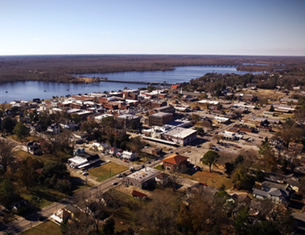The First Amendment Guarantees ALL Freedoms, including a Truthful Press
MODEL RESOLUTION Recognizing that a Baby Born Following a Botched Abortion Procedure has the Same Rights as Any Other Baby Born Alive
MODEL RESOLUTION Recognizing that a Baby Born Following a Botched Abortion Procedure has the Same Rights as Any Other Baby Born Alive
"Within the last 20 years, we have found to be covered by Due Process the right to abortion, which was so little rooted in the traditions of the American people that it was criminal for 200 years; the right to homosexual sodomy, which was so little rooted in the traditions of the American people that it was criminal for 200 years. So it is literally true, and I don't think this is an exaggeration, that the Court has essentially liberated itself from the text of the Constitution and even from the traditions of the American people." [Justice Antonin Scalia, in an interview]
PURPOSE: Mother Teresa once said: "I feel that the greatest destroyer of peace today is abortion, because it is a war against the child, a direct killing of the innocent child, murder by the mother herself. And if we accept that a woman can kill even her own child, how can we tell other people not to kill one another?" The sad reality in our society today is that a baby born following an abortion is NOT valued the same as a baby that is wanted by its mother. Although it would seem only fair and right that all babies born alive be treated the same, have equal access to healthcare professionals, and be provided the same level of care, the truth is that they are not. A baby unwanted by its mother apparently is doomed to carry that rejection with it even through the horrible ordeal of an abortion procedure and then as it lays helpless on a medical table. A baby born alive following a botched abortion procedure did not ask to be created and we all too often forget that. In the case where mercy has allowed the poor unwanted, unloved baby to survive, we MUST recognize that it is still a creation of God and we must accept it into our community of loving, caring human beings. This Resolution addresses that baby's humanity and it's right to life and to the Equal Application and Equal Protection of our Constitution and our laws.
The sad reality in our society today is that a baby born following an abortion is NOT valued the same as a baby that is wanted by its mother. Although it would seem only fair and right that all babies born alive be treated the same, have equal access to healthcare professionals, and be provided the same level of care, the truth is that they are not. A baby unwanted by its mother apparently is doomed to carry that rejection with it even through the horrible ordeal of an abortion procedure and then as it lays helpless on a medical table. A baby born alive following a botched abortion procedure did not ask to be created and we all too often forget that. In the case where mercy has allowed the poor unwanted, unloved baby to survive, we MUST recognize that it is still a creation of God and we must accept it into our community of loving, caring human beings. This Resolution addresses that baby's humanity and it's right to life and to the Equal Application and Equal Protection of our Constitution and our laws.
Whereas, when a woman goes to her OBGYN to confirm her pregnancy, to hopefully see an ultrasound, and to hopefully even hear a heartbeat, the resounding view is that "a new human life has been created";
Whereas, a woman who values life, even at the earliest stage of pregnancy, sees herself as carrying a "baby" while a woman who doesn't want anything in her womb sees that same situation as nothing more than a mass of unwanted cells;
Whereas, history is replete with situations where one group of human beings degrades and diminishes other groups of human beings, thus making it easy to then discriminate against them, subjugate them, and even to dispose of them;
Whereas, the right to an abortion was articulated by the Supreme Court in 1973, in the infamous case, Roe v. Wade which addressed a challenge to a Texas statue criminalizing abortion. Roe's attorneys argued that women have a right to an abortion under her right to privacy, including her right to control her reproductive health and to determine when to reproduce. [Roe v. Wade, 410 U.S. 113 (1973)];
Whereas, the Court has recognized that a general right of personal privacy does not exist under the Constitution, but inferred that certain zones of privacy can be found in the First, Fourth, Fifth, Ninth, and Fourteenth Amendments ('the roots of that right'). The Supreme Court articulated this point in the case Griswold v Connecticut; (1965) which involved a challenge to a Connecticut criminal statute that prohibited married couples from using contraceptives and made their doctors liable for aiding and abetting; [Griswold v. Connecticut, 381 U.S. 479 (1965)];
Whereas, the Court concluded in Roe v. Wade that the inherent right of privacy (which the Court articulated in the case of Griswold v. Connecticut) was broad enough to include the right of a woman to control her fertility and her ability to reproduce (ie, to control what happens with and inside her womb). In other words, the Court concluded that a woman's right to an abortion was a fundamental right. Conservative members of the Court dissented strongly to this ruling and some have lumped it with Griswold as the worst, most progressive opinions handed down by the majority;
Whereas, until the decision in Roe v Wade, women in the United States did not have a constitutional right to an abortion. Rather, each state had the ability to regulate abortion within its borders, as they had done throughout their history. The US Congress could not enact abortion legislation because the federal government lacked the constitutional authority to do so (it was not yet a recognized right);
Whereas, Roe v Wade reached the Supreme Court as part of a growing movement in the US to recognize and liberalize abortion law; arguments in favor of abortion rights centered on women's equality, equality in the workplace, public health, overpopulation, sexual freedom, and feminism;
Whereas, the opinion in Roe was based upon what abortion advocates wanted women to be able to do. And the country soon found out what women were capable of, with respect to the unborn. They sought abortions to terminate the life of the unborn they either found too inconvenient to continue carrying or they didn't want to care for when born, they proudly march and carry signs to attest to the joy of being "free" from an unwanted pregnancy, and now they applaud and rejoice whenever a bill is passed in a state house to expand the right to include abortions up until birth;
Whereas, abortion rights have had certain horrific and unconscionable of unintended consequences, including the offending of our national conscience, alienating our country from the protection of God, the suffering of clinic workers (what they are forced to witness), the suffering (psychologically and emotionally) of the women who abort their babies, and the death of countless innocent lives;
Whereas, the recent passage of "late-term abortion" laws in several states, removing state interests in preserving the pregnancy up until delivery, has shocked our national conscience and has caused society to renew its discussion and debate on abortion and what rights do women actually have or what rights they actually should have;
Whereas, the Court went out of its way not to refer to the unborn fetus as 'a "person" because to do so would bring the unborn under the protection of the Fourteenth Amendment [".... nor shall any State deprive any person of life, liberty, or property, without due process of law; nor deny to any person within its jurisdiction the equal protection of the laws"];
Whereas, the Court acknowledged that the Constitution provides no definition of "person" or "personhood" and then came to its own conclusion that "person' was used in the Amendment in a way that suggested that it did not include the unborn - that it referred to someone outside the womb, able to walk around....";
Whereas, the Court ignored historical precedent, especially at the time of the adoption of the Fourteenth Amendment, that "personhood" and "life" were considered synonymous; and that a fetus was considered a "life" or a "person" per the very wording of various state abortion statues (criminal statutes) at the time of "quickening" or earlier;
Whereas, in fact, when the Fourteenth Amendment was adopted in 1868, the individual states widely recognized children in utero as persons. Nearly every state had criminal laws proscribing abortion, and most of these statutes were classified among 'offenses against the person.' (it is clear that the word 'person' referred to the fetus");
Whereas, at the time the Fourteenth Amendment was adopted, twenty‐three states and six territories referred to the fetus as a 'child' in their statutes proscribing abortion;
Whereas, at the time the Fourteenth Amendment was adopted, nine of the ratifying states explicitly valued the lives of the preborn and their pregnant mothers equally by providing the same range of punishment for killing either during the commission of an abortion;
Whereas, at the time the Fourteenth Amendment was adopted, ten states (nine of which had ratified the Fourteenth Amendment) considered abortion to be either manslaughter, assault with intent to murder, or murder (a murder or manslaughter charge legally requires the victim to be considered a "person");
Whereas, the only plausible explanation for the state laws and policies above is that the legislatures considered the mother and child to be equal in their personhood;
Whereas, layman's dictionaries at the time of the adoption of the Fourteenth Amendment treated the concepts of humanity and personhood interchangeably. (That is "life" = "personhood");
Whereas, a look back through history shows that there were no laws to specifically protect the unborn prior to birth, and that makes sense in light of the generally-accepted definition of "personhood." A pregnant woman was carrying a "life," and hence she was carrying a new person;
Whereas, at the time the Fourteenth Amendment was adopted, Americans, state lawmakers, and government officials understood personhood to include the unborn, just as Blackstone defined it, and therefore a historical analysis shows that society in 1868 viewed personhood and life in much the same way that pro-lifers today view it;
Whereas, besides ignoring historical tradition, the Supreme Court further ignored its own Constitutional/Fourteenth Amendment jurisprudence (established by Snyder v. Massachusetts in 1934) in determining which fundamental rights are incorporated on the States through the Fourteenth Amendment's Due Process Clause. The question the Court must ask is whether the asserted right "is so rooted in the traditions and conscience of our people as to be ranked as fundamental," and the Court is obligated to use the time period of the Amendment's adoption to make that determination. [Snyder v. Massachusetts, 291 U.S. 97, 105 (1934)];
Whereas, the fact that a majority of the States at the time of the Fourteenth Amendment, and especially those that ratified it, had restrictions on abortions for at least a century should have been strong indication to the Court that the asserted right to an abortion is not "so rooted in the traditions and conscience of our people as to be ranked as fundamental," [Snyder v. Massachusetts, pg. 105 of the opinion];
Whereas, William Blackstone's Commentaries on the Laws of England, a treatise that had profound influence on legal thinking and which was used in American law schools, was relied on by the Supreme Court, and continues to be cited even today in Supreme Court decisions (cited at least 10-12 times each year.) expressly recognized that personhood and the right to life existed before birth. He set forth a simple and clear legal standard: "Where life can be shown to exist, legal personhood exists." [Blackstone's Commentaries];
Whereas, it is clear that the fundamental mis-conception at the heart of the Roe case was that a fetus can never be a "life" and hence could never come under the protection of the Fourteenth Amendment which speaks to rights of "persons." In other words, the case was premised on an erroneous assumption;
Whereas, had the Supreme Court had looked at the "life" or the unborn/fetus as opposed to its "viability"; that is, if it had made the proper assumption that a fetus, at least at a certain point, becomes a living being, and hence a "life," then the Constitution and our laws provide protection of that unborn, including observance of its fundamental rights;
Whereas, the Declaration of Independence professes: "We hold these truths to be self-evident, that all men are created equal, that they are endowed by their Creator with certain unalienable Rights, that among these are Life, Liberty and the pursuit of Happiness.-That to secure these rights, Governments are instituted among Men, deriving their just powers from the consent of the governed....";
Whereas, the minute an individual is created and blessed with life, he or she is endowed with inalienable rights, including the right to Life. Moreover, government is instituted for the primary purpose of secure those rights. It makes no difference whether that individual is 15 years old, 40 years old, 10 years old, 1 month old, or 20 weeks old. The minute it became a living being, it is understood to be entitled to the most essential of all inalienable (those attaching to our very humanity) rights;
And whereas, had the Supreme Court recognized life and hence personhood in a fetus (again, at least at a certain point), then it's analysis in Roe v. Wade would not have been "Woman's Fundamental Right to an Abortion" vs. State Interest (if the state even wanted to exercise an interest) in preserving the life of the unborn but rather the correct one which would have been "Woman's Right to an Abortion" vs. "The Unborn's Right to Life";
Whereas, when we recognize an unborn fetus as an independent life, a woman's right to have an abortion will never be broad enough to include the termination of a pregnancy that contains a living fetus. And therefore, just because she may not "want" it, it is still nonetheless a living human being, a "person" within the meaning of the Fourteenth Amendment, and absolutely entitled to Equal Protection under all our laws;
Whereas, if we will follow history and its understanding of "life" inside the womb, then countless living unborn babies will no longer have to be stripped of rights, equality, and even life. They will no longer have to be sacrificed at the altar of a woman's broad right to an abortion.
THEREFORE, Be it Resolved that in consideration of all of the above, a unborn baby is absolutely capable of being considered a "life' and therefore a "person" for purposes of our Declaration of Independence, our Constitution, and our laws;
Be it Further Resolved that an unborn baby is entitled to the Equal Application of all our laws and to the Equal Protection of them;
Furthermore, a health care practitioner who is present at the time an unborn baby is born following an abortion procedure, must (1) exercise the same degree of care as reasonably provided to another child born alive at the same gestational age, and (2) immediately admit the child to a hospital;
Furthermore, a health care practitioner or other employee present at such time has an affirmative obligation and duty to immediately report any failure to comply with this requirement to law enforcement;
And furthermore, any person who violates the requirements will be subject to criminal penalties (likely to include a fine, up to five years in prison, or both.
Finally, Be it Resolved that an individual who intentionally kills or attempts to kill a child born alive is subject to prosecution for murder.
References:
Diane Rufino, "Why Can't Women be Both Pro-Choice and Pro-Life? It's Possible With Common-Sense Limitations on Abortion," For Love of God and Country Blog, February 1, 2019.
Revelations from Norma McCorvey (aka, Jane Roe) of Roe v. Wade
Roe v. Wade [410 U.S. 113 (1973)] full text of majority opinion
Griswold v. Connecticut, 381 U.S. 479 (1965), summary
Merle H Weiner, "Roe v. Wade Case (US)," Oxford Constitutional Law [Under an "originalist" approach, the Court would have had to determine what the word "persons" was understood to mean when the 14th Amendment was written and ratified. "Originalism" is often equated with "Textualism" (where judges look at the meaning of the words and intent at the time they were written) A honest analysis would have looked not only at the definition of the term "persons" around the time of 1868, but also at society's view of abortion at that time. In fact, for a claimed right to be covered by the 14th Amendment and hence free from government/state regulation, that right would have had to have been considered an essential liberty right at the time the Amendment was adopted. In other words, the Court should have asked two questions: "What did the term 'persons' mean back in 1868?" And, "Was abortion considered a fundamental liberty right back in 1868?" [That is, the Court should have asked: Was the asserted right to an abortion "so rooted in the traditions and conscience of our people as to be ranked as fundamental," Snyder v. Massachusetts, 291 U.S. 97, 105 (1934)].
Joshua J. Craddick, Joshua J. Craddock, "Protecting Prenatal Persons: Does the Fourteenth Amendment Prohibit Abortion?," Harvard Journal of Law and Public Policy, Vol. 40, No. 2 (2017). Referenced at: file:///C:/Users/diane/Downloads/SSRN-id2970761.pdf [Abstract: What should the legal status of human beings in utero be under an originalist interpretation of the Constitution? Other legal thinkers have explored whether a national "right to abortion" can be justified on originalist grounds. Assuming that it cannot, and that Roe v. Wade and Planned Parenthood of Southeastern Pennsylvania v. Casey were wrongly decided, only two other options are available. Should preborn human beings be considered legal "persons" within the meaning of the Fourteenth Amendment, or do states retain authority to make abortion policy?
The late Justice Scalia famously argued for the latter position and pledged he would strike down a federal ban on abortion. But is this view consistent with the original meaning of the term "person"? Using originalist interpretive methods, this paper argues that preborn human beings are legal "persons" within the meaning of the Fourteenth Amendment.]
Go Back
"Within the last 20 years, we have found to be covered by Due Process the right to abortion, which was so little rooted in the traditions of the American people that it was criminal for 200 years; the right to homosexual sodomy, which was so little rooted in the traditions of the American people that it was criminal for 200 years. So it is literally true, and I don't think this is an exaggeration, that the Court has essentially liberated itself from the text of the Constitution and even from the traditions of the American people." [Justice Antonin Scalia, in an interview]
PURPOSE: Mother Teresa once said: "I feel that the greatest destroyer of peace today is abortion, because it is a war against the child, a direct killing of the innocent child, murder by the mother herself. And if we accept that a woman can kill even her own child, how can we tell other people not to kill one another?" The sad reality in our society today is that a baby born following an abortion is NOT valued the same as a baby that is wanted by its mother. Although it would seem only fair and right that all babies born alive be treated the same, have equal access to healthcare professionals, and be provided the same level of care, the truth is that they are not. A baby unwanted by its mother apparently is doomed to carry that rejection with it even through the horrible ordeal of an abortion procedure and then as it lays helpless on a medical table. A baby born alive following a botched abortion procedure did not ask to be created and we all too often forget that. In the case where mercy has allowed the poor unwanted, unloved baby to survive, we MUST recognize that it is still a creation of God and we must accept it into our community of loving, caring human beings. This Resolution addresses that baby's humanity and it's right to life and to the Equal Application and Equal Protection of our Constitution and our laws.
The sad reality in our society today is that a baby born following an abortion is NOT valued the same as a baby that is wanted by its mother. Although it would seem only fair and right that all babies born alive be treated the same, have equal access to healthcare professionals, and be provided the same level of care, the truth is that they are not. A baby unwanted by its mother apparently is doomed to carry that rejection with it even through the horrible ordeal of an abortion procedure and then as it lays helpless on a medical table. A baby born alive following a botched abortion procedure did not ask to be created and we all too often forget that. In the case where mercy has allowed the poor unwanted, unloved baby to survive, we MUST recognize that it is still a creation of God and we must accept it into our community of loving, caring human beings. This Resolution addresses that baby's humanity and it's right to life and to the Equal Application and Equal Protection of our Constitution and our laws.
Whereas, when a woman goes to her OBGYN to confirm her pregnancy, to hopefully see an ultrasound, and to hopefully even hear a heartbeat, the resounding view is that "a new human life has been created";
Whereas, a woman who values life, even at the earliest stage of pregnancy, sees herself as carrying a "baby" while a woman who doesn't want anything in her womb sees that same situation as nothing more than a mass of unwanted cells;
Whereas, history is replete with situations where one group of human beings degrades and diminishes other groups of human beings, thus making it easy to then discriminate against them, subjugate them, and even to dispose of them;
Whereas, the right to an abortion was articulated by the Supreme Court in 1973, in the infamous case, Roe v. Wade which addressed a challenge to a Texas statue criminalizing abortion. Roe's attorneys argued that women have a right to an abortion under her right to privacy, including her right to control her reproductive health and to determine when to reproduce. [Roe v. Wade, 410 U.S. 113 (1973)];
Whereas, the Court has recognized that a general right of personal privacy does not exist under the Constitution, but inferred that certain zones of privacy can be found in the First, Fourth, Fifth, Ninth, and Fourteenth Amendments ('the roots of that right'). The Supreme Court articulated this point in the case Griswold v Connecticut; (1965) which involved a challenge to a Connecticut criminal statute that prohibited married couples from using contraceptives and made their doctors liable for aiding and abetting; [Griswold v. Connecticut, 381 U.S. 479 (1965)];
Whereas, the Court concluded in Roe v. Wade that the inherent right of privacy (which the Court articulated in the case of Griswold v. Connecticut) was broad enough to include the right of a woman to control her fertility and her ability to reproduce (ie, to control what happens with and inside her womb). In other words, the Court concluded that a woman's right to an abortion was a fundamental right. Conservative members of the Court dissented strongly to this ruling and some have lumped it with Griswold as the worst, most progressive opinions handed down by the majority;
Whereas, until the decision in Roe v Wade, women in the United States did not have a constitutional right to an abortion. Rather, each state had the ability to regulate abortion within its borders, as they had done throughout their history. The US Congress could not enact abortion legislation because the federal government lacked the constitutional authority to do so (it was not yet a recognized right);
Whereas, Roe v Wade reached the Supreme Court as part of a growing movement in the US to recognize and liberalize abortion law; arguments in favor of abortion rights centered on women's equality, equality in the workplace, public health, overpopulation, sexual freedom, and feminism;
Whereas, the opinion in Roe was based upon what abortion advocates wanted women to be able to do. And the country soon found out what women were capable of, with respect to the unborn. They sought abortions to terminate the life of the unborn they either found too inconvenient to continue carrying or they didn't want to care for when born, they proudly march and carry signs to attest to the joy of being "free" from an unwanted pregnancy, and now they applaud and rejoice whenever a bill is passed in a state house to expand the right to include abortions up until birth;
Whereas, abortion rights have had certain horrific and unconscionable of unintended consequences, including the offending of our national conscience, alienating our country from the protection of God, the suffering of clinic workers (what they are forced to witness), the suffering (psychologically and emotionally) of the women who abort their babies, and the death of countless innocent lives;
Whereas, the recent passage of "late-term abortion" laws in several states, removing state interests in preserving the pregnancy up until delivery, has shocked our national conscience and has caused society to renew its discussion and debate on abortion and what rights do women actually have or what rights they actually should have;
Whereas, the Court went out of its way not to refer to the unborn fetus as 'a "person" because to do so would bring the unborn under the protection of the Fourteenth Amendment [".... nor shall any State deprive any person of life, liberty, or property, without due process of law; nor deny to any person within its jurisdiction the equal protection of the laws"];
Whereas, the Court acknowledged that the Constitution provides no definition of "person" or "personhood" and then came to its own conclusion that "person' was used in the Amendment in a way that suggested that it did not include the unborn - that it referred to someone outside the womb, able to walk around....";
Whereas, the Court ignored historical precedent, especially at the time of the adoption of the Fourteenth Amendment, that "personhood" and "life" were considered synonymous; and that a fetus was considered a "life" or a "person" per the very wording of various state abortion statues (criminal statutes) at the time of "quickening" or earlier;
Whereas, in fact, when the Fourteenth Amendment was adopted in 1868, the individual states widely recognized children in utero as persons. Nearly every state had criminal laws proscribing abortion, and most of these statutes were classified among 'offenses against the person.' (it is clear that the word 'person' referred to the fetus");
Whereas, at the time the Fourteenth Amendment was adopted, twenty‐three states and six territories referred to the fetus as a 'child' in their statutes proscribing abortion;
Whereas, at the time the Fourteenth Amendment was adopted, nine of the ratifying states explicitly valued the lives of the preborn and their pregnant mothers equally by providing the same range of punishment for killing either during the commission of an abortion;
Whereas, at the time the Fourteenth Amendment was adopted, ten states (nine of which had ratified the Fourteenth Amendment) considered abortion to be either manslaughter, assault with intent to murder, or murder (a murder or manslaughter charge legally requires the victim to be considered a "person");
Whereas, the only plausible explanation for the state laws and policies above is that the legislatures considered the mother and child to be equal in their personhood;
Whereas, layman's dictionaries at the time of the adoption of the Fourteenth Amendment treated the concepts of humanity and personhood interchangeably. (That is "life" = "personhood");
Whereas, a look back through history shows that there were no laws to specifically protect the unborn prior to birth, and that makes sense in light of the generally-accepted definition of "personhood." A pregnant woman was carrying a "life," and hence she was carrying a new person;
Whereas, at the time the Fourteenth Amendment was adopted, Americans, state lawmakers, and government officials understood personhood to include the unborn, just as Blackstone defined it, and therefore a historical analysis shows that society in 1868 viewed personhood and life in much the same way that pro-lifers today view it;
Whereas, besides ignoring historical tradition, the Supreme Court further ignored its own Constitutional/Fourteenth Amendment jurisprudence (established by Snyder v. Massachusetts in 1934) in determining which fundamental rights are incorporated on the States through the Fourteenth Amendment's Due Process Clause. The question the Court must ask is whether the asserted right "is so rooted in the traditions and conscience of our people as to be ranked as fundamental," and the Court is obligated to use the time period of the Amendment's adoption to make that determination. [Snyder v. Massachusetts, 291 U.S. 97, 105 (1934)];
Whereas, the fact that a majority of the States at the time of the Fourteenth Amendment, and especially those that ratified it, had restrictions on abortions for at least a century should have been strong indication to the Court that the asserted right to an abortion is not "so rooted in the traditions and conscience of our people as to be ranked as fundamental," [Snyder v. Massachusetts, pg. 105 of the opinion];
Whereas, William Blackstone's Commentaries on the Laws of England, a treatise that had profound influence on legal thinking and which was used in American law schools, was relied on by the Supreme Court, and continues to be cited even today in Supreme Court decisions (cited at least 10-12 times each year.) expressly recognized that personhood and the right to life existed before birth. He set forth a simple and clear legal standard: "Where life can be shown to exist, legal personhood exists." [Blackstone's Commentaries];
Whereas, it is clear that the fundamental mis-conception at the heart of the Roe case was that a fetus can never be a "life" and hence could never come under the protection of the Fourteenth Amendment which speaks to rights of "persons." In other words, the case was premised on an erroneous assumption;
Whereas, had the Supreme Court had looked at the "life" or the unborn/fetus as opposed to its "viability"; that is, if it had made the proper assumption that a fetus, at least at a certain point, becomes a living being, and hence a "life," then the Constitution and our laws provide protection of that unborn, including observance of its fundamental rights;
Whereas, the Declaration of Independence professes: "We hold these truths to be self-evident, that all men are created equal, that they are endowed by their Creator with certain unalienable Rights, that among these are Life, Liberty and the pursuit of Happiness.-That to secure these rights, Governments are instituted among Men, deriving their just powers from the consent of the governed....";
Whereas, the minute an individual is created and blessed with life, he or she is endowed with inalienable rights, including the right to Life. Moreover, government is instituted for the primary purpose of secure those rights. It makes no difference whether that individual is 15 years old, 40 years old, 10 years old, 1 month old, or 20 weeks old. The minute it became a living being, it is understood to be entitled to the most essential of all inalienable (those attaching to our very humanity) rights;
And whereas, had the Supreme Court recognized life and hence personhood in a fetus (again, at least at a certain point), then it's analysis in Roe v. Wade would not have been "Woman's Fundamental Right to an Abortion" vs. State Interest (if the state even wanted to exercise an interest) in preserving the life of the unborn but rather the correct one which would have been "Woman's Right to an Abortion" vs. "The Unborn's Right to Life";
Whereas, when we recognize an unborn fetus as an independent life, a woman's right to have an abortion will never be broad enough to include the termination of a pregnancy that contains a living fetus. And therefore, just because she may not "want" it, it is still nonetheless a living human being, a "person" within the meaning of the Fourteenth Amendment, and absolutely entitled to Equal Protection under all our laws;
Whereas, if we will follow history and its understanding of "life" inside the womb, then countless living unborn babies will no longer have to be stripped of rights, equality, and even life. They will no longer have to be sacrificed at the altar of a woman's broad right to an abortion.
THEREFORE, Be it Resolved that in consideration of all of the above, a unborn baby is absolutely capable of being considered a "life' and therefore a "person" for purposes of our Declaration of Independence, our Constitution, and our laws;
Be it Further Resolved that an unborn baby is entitled to the Equal Application of all our laws and to the Equal Protection of them;
Furthermore, a health care practitioner who is present at the time an unborn baby is born following an abortion procedure, must (1) exercise the same degree of care as reasonably provided to another child born alive at the same gestational age, and (2) immediately admit the child to a hospital;
Furthermore, a health care practitioner or other employee present at such time has an affirmative obligation and duty to immediately report any failure to comply with this requirement to law enforcement;
And furthermore, any person who violates the requirements will be subject to criminal penalties (likely to include a fine, up to five years in prison, or both.
Finally, Be it Resolved that an individual who intentionally kills or attempts to kill a child born alive is subject to prosecution for murder.
References:
Diane Rufino, "Why Can't Women be Both Pro-Choice and Pro-Life? It's Possible With Common-Sense Limitations on Abortion," For Love of God and Country Blog, February 1, 2019.
Revelations from Norma McCorvey (aka, Jane Roe) of Roe v. Wade
Roe v. Wade [410 U.S. 113 (1973)] full text of majority opinion
Griswold v. Connecticut, 381 U.S. 479 (1965), summary
Merle H Weiner, "Roe v. Wade Case (US)," Oxford Constitutional Law [Under an "originalist" approach, the Court would have had to determine what the word "persons" was understood to mean when the 14th Amendment was written and ratified. "Originalism" is often equated with "Textualism" (where judges look at the meaning of the words and intent at the time they were written) A honest analysis would have looked not only at the definition of the term "persons" around the time of 1868, but also at society's view of abortion at that time. In fact, for a claimed right to be covered by the 14th Amendment and hence free from government/state regulation, that right would have had to have been considered an essential liberty right at the time the Amendment was adopted. In other words, the Court should have asked two questions: "What did the term 'persons' mean back in 1868?" And, "Was abortion considered a fundamental liberty right back in 1868?" [That is, the Court should have asked: Was the asserted right to an abortion "so rooted in the traditions and conscience of our people as to be ranked as fundamental," Snyder v. Massachusetts, 291 U.S. 97, 105 (1934)].
Joshua J. Craddick, Joshua J. Craddock, "Protecting Prenatal Persons: Does the Fourteenth Amendment Prohibit Abortion?," Harvard Journal of Law and Public Policy, Vol. 40, No. 2 (2017). Referenced at: file:///C:/Users/diane/Downloads/SSRN-id2970761.pdf [Abstract: What should the legal status of human beings in utero be under an originalist interpretation of the Constitution? Other legal thinkers have explored whether a national "right to abortion" can be justified on originalist grounds. Assuming that it cannot, and that Roe v. Wade and Planned Parenthood of Southeastern Pennsylvania v. Casey were wrongly decided, only two other options are available. Should preborn human beings be considered legal "persons" within the meaning of the Fourteenth Amendment, or do states retain authority to make abortion policy?
The late Justice Scalia famously argued for the latter position and pledged he would strike down a federal ban on abortion. But is this view consistent with the original meaning of the term "person"? Using originalist interpretive methods, this paper argues that preborn human beings are legal "persons" within the meaning of the Fourteenth Amendment.]
| One Happy Day | Local News & Expression, Editorials, For Love of God and Country, Op-Ed & Politics | STOP & FRISK: It's a Good Thing |























